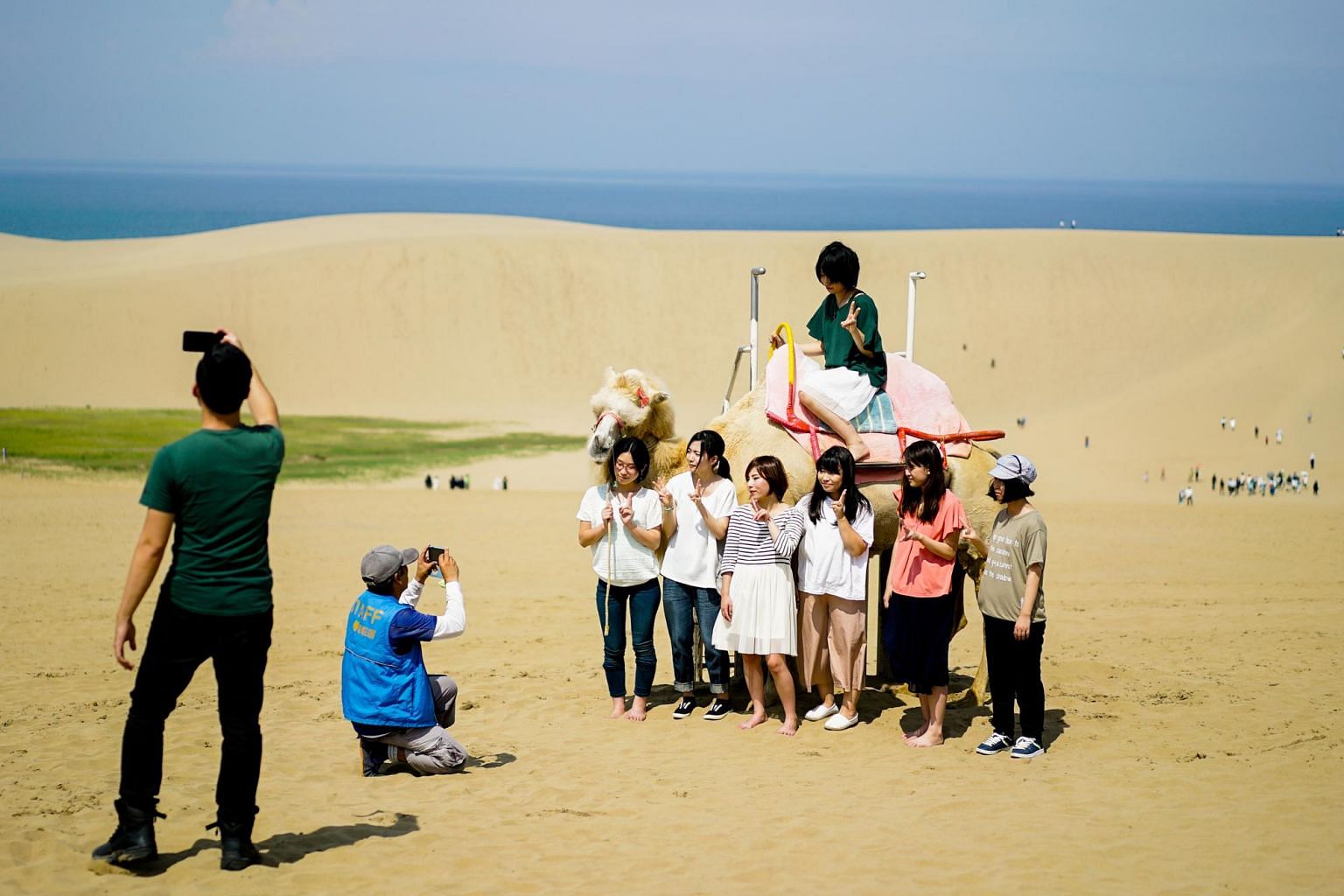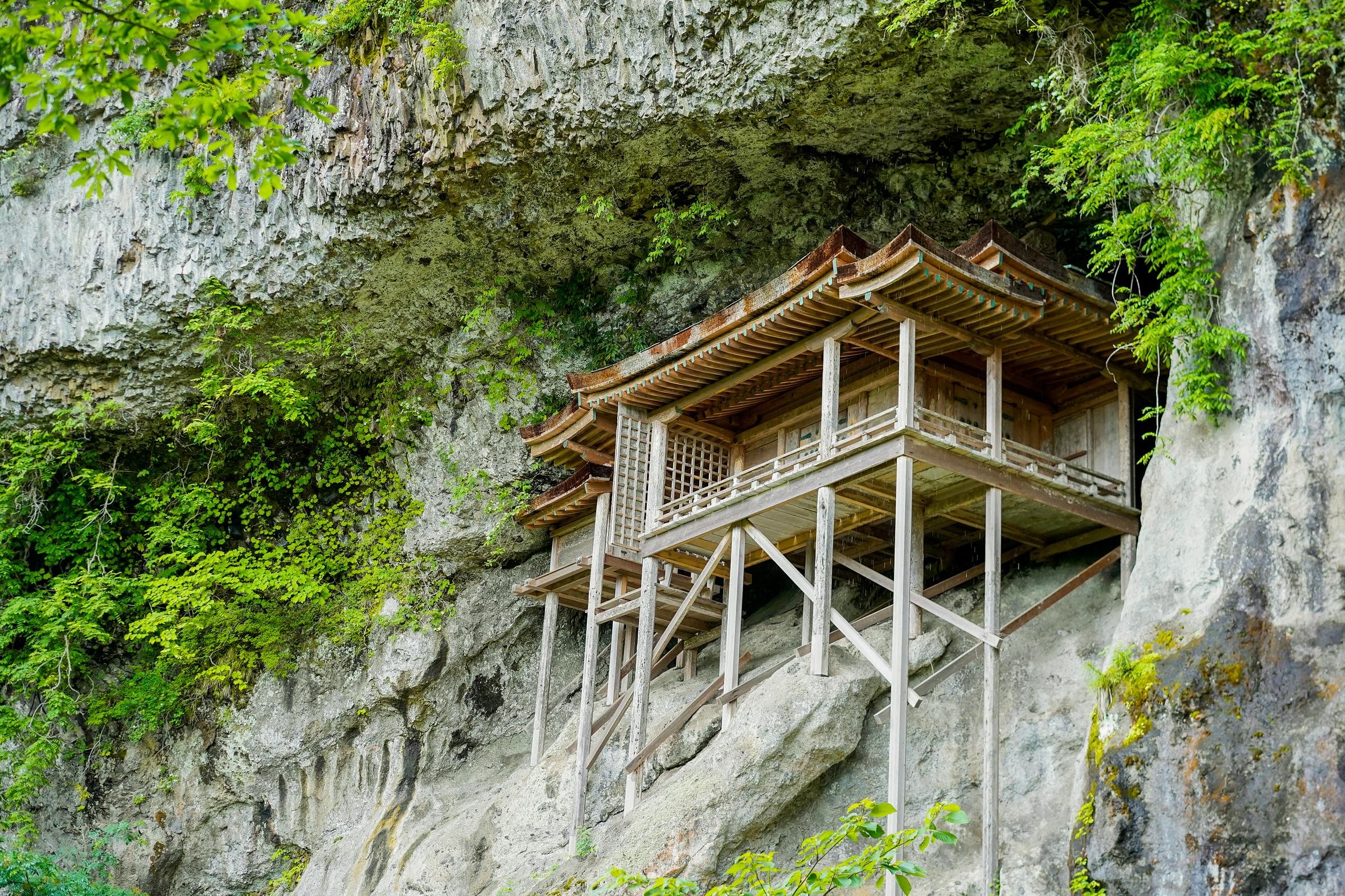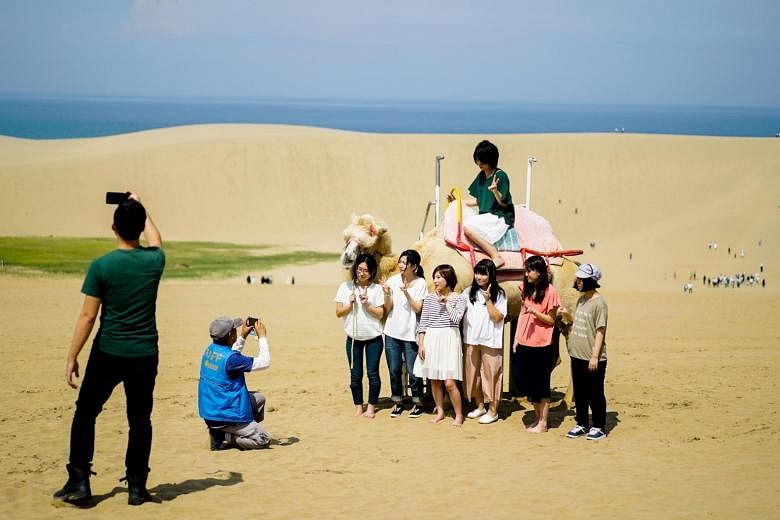SINGAPORE - "Is it related to Totoro?" That is the question I always get when I speak about Tottori, my new favourite place in Japan.
The answer is no, in case you are expecting to see droves of the cuddly spirit, an anime character. So, Tottori is not the plural of Totoro.
Tottori in western Japan is that polite, soft-spoken cousin that always gets overshadowed by her loud and funny neighbour Osaka (three hours away by bus or train) or edgy Tokyo (a one-hour plane ride away).
Get to know Tottori - the city and the prefecture of the same name - and you realise that she is a quiet overachiever who has been beating Kobe at beef and Hokkaido at crabs.
I have visited it thrice since 2017 and I picture Tottori as that hidden gem in a country often traversed by Singaporeans.
The least populated of Japan's 47 prefectures, Tottori has the best things the country has to offer in one place, from towering sand dunes to luscious seafood.
SNOW AS POWDERY AS NISEKO
The day I arrived in Tottori in January last year, the whole city was blanketed with infinite sheets of white snow.
My joy was shortlived because, despite desperate pleas, I was strapped onto a snowboard and shoved down the seemingly endless slopes. In the end, the instructor had to waltz me all the way down because there was not an ounce of balance in my body.

Happily, all the slopes of Tottori face the coast, so in clear weather, you get majestic views of the Sea of Japan.
It has a good range of slopes, with 30 per cent rated advanced, another 30 per cent for the intermediate skiers and the bulk of it - 40 per cent - for beginners.
BEEF BETTER THAN KOBE'S

Shabu-shabu originated from Tottori and its beef is rated even higher than that of Kobe's.
In 2017, it won the Best Quality Beef accolade at the Wagyu Olympics, as the National Competitive Exhibition of Wagyu is popularly called. The nationwide contest has been held every five years since 1966.
MORE CRABS THAN HOKKAIDO
Tottori also catches triple the number of crabs as Hokkaido. Snow crabs caught in the Tottori area are called Matsuba crab, known for its deliciously dense meat and the astronomical prices it can fetch at auctions. A record price of two million yen (S$24,300) for a crab was set last year.
Pamper yourself with a luxurious assortment of crab sashimi, grilled crab, boiled crab and crab hot pot. Also try crab miso, which is best paired with sake.
SURREAL SAND DUNES

There is something mystical about sand dunes. Maybe it is because they seem eternal and transient at the same time.
Tottori's sand dunes beat any of the deserts I have seen in Dubai, Morocco or Brazil - simply for the fact that they are next to the sea. It does not get any more surreal than that.
Created over thousands of years, the shapes of the dunes are constantly in flux, nudged by the coastal currents.
In the summer, fun-loving travellers can go camel riding, sandboarding and paragliding. A sand museum (2083-17 Fukubecho Yuyama, Tottori, Tottori Prefecture 689-0105), within walking distance of the dunes, is where sand sculptors from all over the world are invited to create a themed exhibition that lasts from mid-April to early January every year.
The theme of the last exhibition, which ended on Jan 6, was Scandinavia and included scenes from Nordic legends.
The next annual show will focus on South Asia.
DANGEROUS NATIONAL TREASURE

The hike to Japan's most dangerous treasure was a full-on G.I. Jane mission which involved climbing on century-old tree roots and hoisting myself up with chains.
To this day, I cannot believe I made it after two hours on slopes rendered into slush by the rain.
Of the three oldest temples in Japan, two are along the hike, so that is a big box you can tick off on your bucket list of temples.
My end point, the Mitokusan Sanbutsuji Temple, juts out dramatically from the cliff, somewhat like the Tiger's Nest temple complex in Bhutan.
TOTTORI, A JAPANESE TAPESTRY
Before the world descends on this haven of heavenly wagyu and less-seen natural wonders, it is a good idea to experience Tottori for yourself. Also, do not forget to make generous room for surprises, from a kaiseki lunch in the forest to the enigmatic sand dunes.
Charming without even trying, Tottori presents a nuanced tapestry of Japan little known even to many locals.
When to go? You will be hard-pressed for a decision. Sun and sand or snow? Maybe it will not be a problem in the end. Like me, you may keep coming back for more.
• Mandy Tay, who produces television trailers and advertisements, has filmed Tottori in summer, autumn and winter and will visit again this spring. The writer was hosted by the Tottori prefectural government.


